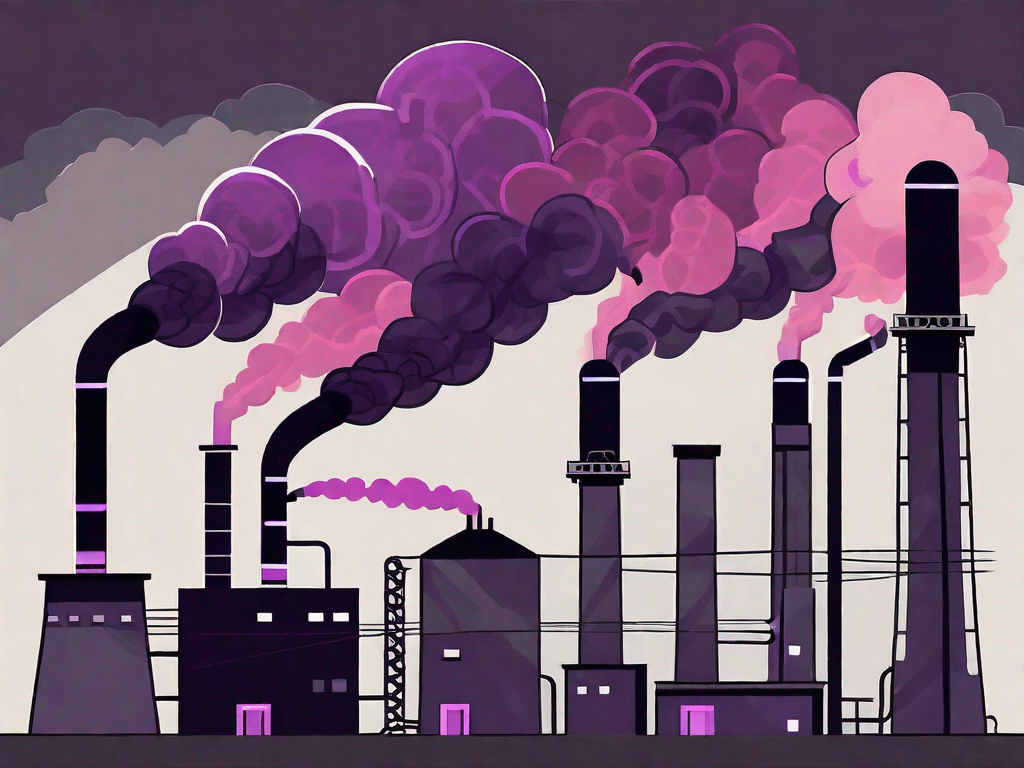Pollution’s link to cancer is both alarming and profound, serving as a stark reminder of the environmental hazards that surround us. This article delves into the carcinogenic potential of pollutants in our air, water, and food, highlighting substances like benzene and formaldehyde, which are pervasive in our environment and have been conclusively linked to various cancers. It sheds light on the disproportionate impact of pollution on marginalized communities and emphasizes the importance of a united effort to mitigate pollution’s effects. Offering practical advice, the piece advocates for individual actions such as embracing eco-friendly products and supporting clean energy initiatives, as well as broader societal changes through policy advocacy and community engagement. By understanding the risks and taking proactive steps, we can reduce our exposure to harmful pollutants and, in turn, our cancer risk, paving the way for a healthier, more equitable future.
Pollution is a silent but deadly menace that poses a significant risk to our health. In recent years, there has been growing concern over the link between pollution and cancer. This article aims to shed light on the role of pollution in cancer risk and provide practical strategies to reduce exposure and protect ourselves and our loved ones.
Pollution’s Hidden Menace: Linking Toxins to Cancer
While pollution is often associated with respiratory problems, its impact extends far beyond that. Many pollutants contain carcinogens, substances that have the potential to cause cancer. These carcinogens can be found in the air we breathe, the water we drink, and the food we consume. From industrial emissions to household pollutants, such as tobacco smoke and cleaning chemicals, we are constantly exposed to cancer-causing agents.
Long-term exposure to these toxins increases the risk of developing various types of cancers, including lung, bladder, and breast cancer. The connection between pollution and cancer is complex, but scientific research has provided compelling evidence of the harmful effects of environmental toxins on our health.
One of the most well-known carcinogens found in pollution is benzene. This chemical compound is commonly released into the air through industrial processes, vehicle emissions, and cigarette smoke. Benzene has been linked to various types of cancer, including leukemia, lymphoma, and multiple myeloma. It is classified as a Group 1 carcinogen by the International Agency for Research on Cancer (IARC), indicating that there is sufficient evidence to support its carcinogenicity in humans.
Another dangerous carcinogen found in pollution is formaldehyde. This colorless gas is used in many industries, including the production of plastics, textiles, and household products. Formaldehyde can be released into the air from building materials, such as plywood and particleboard, as well as from tobacco smoke and vehicle exhaust. Prolonged exposure to formaldehyde has been associated with an increased risk of nasopharyngeal cancer, as well as respiratory and neurological disorders.
Aside from airborne pollutants, water contamination is also a significant concern when it comes to cancer-causing agents. One example is arsenic, a naturally occurring element that can contaminate groundwater. Arsenic exposure through drinking water has been linked to an increased risk of skin, lung, bladder, and kidney cancer. In some regions where arsenic contamination is prevalent, such as certain parts of Bangladesh and West Bengal in India, the incidence of arsenic-related cancers is alarmingly high.
Food can also be a source of carcinogens due to pollution. Pesticides, which are commonly used in agriculture to control pests and increase crop yields, can leave residues on fruits, vegetables, and grains. Some pesticides have been classified as potential or probable carcinogens by regulatory agencies, such as the Environmental Protection Agency (EPA) and the IARC. Prolonged exposure to these pesticide residues through the consumption of contaminated food has been associated with an increased risk of certain cancers, including prostate, liver, and non-Hodgkin lymphoma.
It is important to note that the impact of pollution on cancer risk is not limited to individual exposure. Pollutants can also have a cumulative effect on communities and populations living in close proximity to industrial sites or heavily polluted areas. Environmental justice issues arise when marginalized communities, often low-income and minority populations, bear the brunt of pollution-related health risks.
As our understanding of the link between pollution and cancer continues to evolve, it is crucial to prioritize efforts to reduce pollution and minimize exposure to carcinogens. This includes implementing stricter regulations on industrial emissions, promoting sustainable and eco-friendly practices, and advocating for clean energy alternatives. By addressing pollution at its source, we can protect not only our respiratory health but also reduce the risk of cancer and promote overall well-being.
Carcinogens in the Air: How Pollutants Trigger Cancer
Air pollution, specifically, plays a significant role in cancer risk. Fine particulate matter, such as soot and smoke, can penetrate deep into our lungs and enter our bloodstream. These particles carry harmful chemicals, including heavy metals and polycyclic aromatic hydrocarbons (PAHs), which are known to cause cancer.
Exposure to air pollution not only affects our respiratory system but also increases the likelihood of developing cancers in other parts of our body. The International Agency for Research on Cancer (IARC) has classified outdoor air pollution as a Group 1 carcinogen, meaning it is a proven cause of cancer in humans.
The Growing Epidemic of Water Pollution
Water pollution is another pressing issue that cannot be overlooked. Industrial waste, agricultural runoff, and improper disposal of harmful substances contaminate our water sources, exposing us to a cocktail of toxins. These contaminants, such as pesticides, heavy metals, and chemical pollutants, have been linked to various types of cancer, including liver, kidney, and gastrointestinal cancers.
Moreover, emerging contaminants, such as pharmaceuticals and microplastics, pose additional risks to our health. The long-term effects of these pollutants are still being investigated, but preliminary studies suggest a potential link to cancer development.
Vulnerable Populations: Assessing the Disproportionate Impact
While pollution affects everyone, certain populations are more vulnerable to its harmful effects. Low-income communities, racial minorities, and marginalized groups often bear the brunt of environmental pollution. They may live in areas with high levels of pollution due to proximity to factories, highways, or waste facilities.
Additionally, factors such as inadequate access to healthcare, limited resources for disease prevention, and genetic predispositions can further exacerbate the impact of pollution on these communities. Addressing these disparities and advocating for environmental justice is crucial to protect the most vulnerable among us.
Preventive Strategies: Reducing Exposure and Risk
While we cannot completely eliminate pollution, there are steps we can take to reduce our exposure and minimize the associated cancer risk. Awareness and education are key in empowering individuals and communities to make informed choices and demand action.
Supporting policies that prioritize environmental protection, advocating for clean energy alternatives, and participating in community clean-up efforts can all contribute to a cleaner and healthier environment. Taking small steps, such as using eco-friendly products, minimizing the use of pesticides, and proper waste disposal, can also make a significant difference.
Practical Strategies to Make Your House Safer from Pollution
Your home should be a sanctuary, free from the hazards of pollution. Implementing practical strategies can help create a healthier indoor environment for you and your family. Proper ventilation, regular cleaning of air filters, and using air purifiers can help reduce indoor air pollution.
Avoiding the use of harmful chemicals, such as synthetic fragrances and cleaning products, and opting for natural alternatives can further minimize exposure. Consistently maintaining a smoke-free environment and regularly testing for radon, a radioactive gas that can seep into homes, are also essential steps in reducing cancer risk.
Global Initiatives: Combating Pollution to Fight Cancer
Addressing pollution requires a collective effort on a global scale. Governments, organizations, and individuals must work together to implement sustainable solutions and reduce pollution levels. Investing in clean technologies, promoting renewable energy sources, and enforcing stricter regulations on industrial emissions are essential for creating a cleaner and healthier future.
Furthermore, raising awareness about pollution’s connection to cancer and advocating for change can make a significant impact. By supporting and contributing to organizations dedicated to environmental conservation and cancer research, we can drive forward the crucial work needed to combat pollution and reduce cancer risks worldwide.
Conclusion
Pollution is a serious threat to our health, and its role in cancer risk cannot be ignored. The evidence linking pollution and cancer is compelling, and it is imperative that we take action to protect ourselves and future generations.
By understanding the hidden dangers of pollution, implementing preventive strategies, and supporting global initiatives, we can make a positive impact on our environment and reduce the risk of cancer. Together, we can create a world where clean air, water, and a healthier future are accessible to all.






